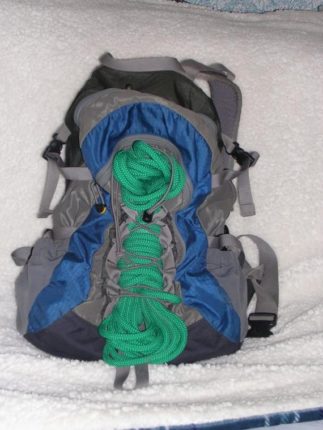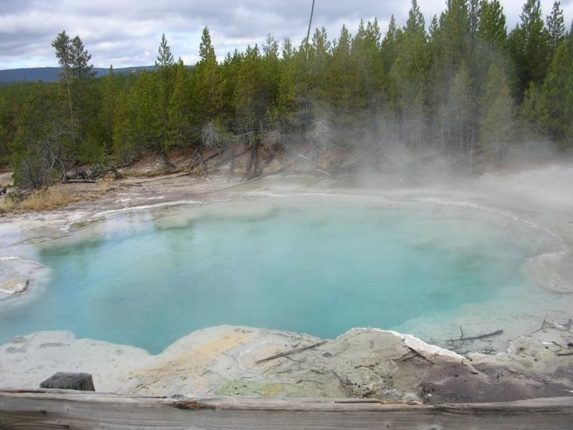While growing up on my father’s horse ranch, I was in charge of eliminating all the dogs that came on to the ranch and chased the horses, trying to bite into their fetlocks and cripple them. Unfortunately, those dogs were driven out on the old Bannock Highway and abandoned along the road. By the time we saw them, they had grown into larger dogs and had formed a pack that sometimes came on to our ranch. They were vicious if approached, and my 12-gauge shotgun was generally the last thing they saw or heard. It was a job I didn’t enjoy because, like most boys, I liked dogs. However, my dad raised show horses and had a breeding program that he needed to protect.
My father also volunteered my .22 rifle and I to help the farmers in Blackfoot and Wapello, where he was born, shoot the jackrabbits that tried to feed on their crops. I actually liked the jackrabbit hunts because it was a challenge to find them in the sagebrush and then hit them while they ran through the brush.
In both cases, shooting dogs that no one owned that were chasing the horses and shooting rabbits that were eating the farmer’s crops, my father and I were eliminating vermin that were eating crops and endangering domestic animals. I imagine it might seem cruel to some people, but I doubt if those people have ever watched while their crops were being destroyed or a horse was crippled and rendered useless after the muscles and tendons in their fetlocks had been torn out.
We also had a problem from time to time with mountain lions coming down off the mountain as they followed deer that came down into the valley. In the case of mountain lions, they normally didn’t go after the horses because of the human presence on the farms and the farmer’s dogs, which sounded the alarm that the large cats were near by. If we called Fish and Game, they would come out and trap the mountain lions and try to relocate them.
I have a distant relative who owns a pretty large cattle ranch at the foot of the Ruby Mountains in the area around Elko and Spring Creek, Nevada. He invited my son and I to visit the ranch and shoot as many coyotes as we could. We haven’t done it yet, but evidently the coyotes are attacking his cattle and causing quite a bit of damage and costing him a substantial amount of money. No license is required to shoot them as they are considered vermin by the state of Nevada.
As a hunter, I had always been taught not to harm any animal that I didn’t intend to eat unless that animal presented an unacceptable danger to our animals or to people and their property. Killing an animal simply to kill it, or for target practice, or because it was there and I had my rifle with me was against the code, if you want to call it a code, that my father had taught me to follow. I simply do not understand why some have no hesitation to kill any animal that is not causing a problem.
In Idaho, Wyoming and Nevada, there is no limit to the number of coyotes one can kill, or any restrictions on the time of year one can kill coyotes. In Nevada and Wyoming, no license is required to kill coyotes, while in Idaho one must still have a hunting license and permission from the landowner and state is required to hunt coyotes at night.
Wyoming allows killing coyotes by any means including poisoning, shooting, incinerating or chasing them until they are exhausted and then running over them with all terrain vehicles or snowmobiles until they are dead.
When management of wolves was turned over to the state of Wyoming, legislators in Cheyenne immediately classified wolves as predators, which puts them in the same class as coyotes and the same unrestricted killing of coyotes now also applies to wolves in Wyoming.
The only places in Wyoming where killing wolves and coyotes is prohibited is Yellowstone and Grand Teton National parks.
Another thing that bothers me is a recent report that someone killed two elk in Southeast Idaho, quartered them and then dumped the meat rather than keep it or donate it to friends or Idaho Hunters Feeding the Hungry. Two elk were killed and the meat was just left to waste.
I believe such wanton disregard for animals that are not threatening livestock or people and their property or killing of elk or deer and then leaving the carcass and meat to spoil will ultimately bring a backlash on the hunting community by the general public and hunters themselves, who have been taught to respect the animals we hunt.
As responsible hunters, I believe we need to stand up and oppose the indiscriminate killing of any wildlife, or we are going to see more species added to the list of animals that can be killed any time, any place, with no limits or license required
I personally want my grandchildren to have the same experience I have had of camping out in the back country and going to sleep to the sound of coyotes hunting as a group during the night. The gray wolf was extinct in Idaho as I was growing up, so I never heard one in Idaho during hunting trips or camping trips into the back country. They reintroduced to Idaho about the time I returned after I retired. So far, I still haven’t seen or heard one in the wild in Idaho, but it is on my bucket list.
Smokey Merkley was raised in Idaho and has been hunting since he was 10 years old. He can be contacted at mokeydo41245@gmail.com.

